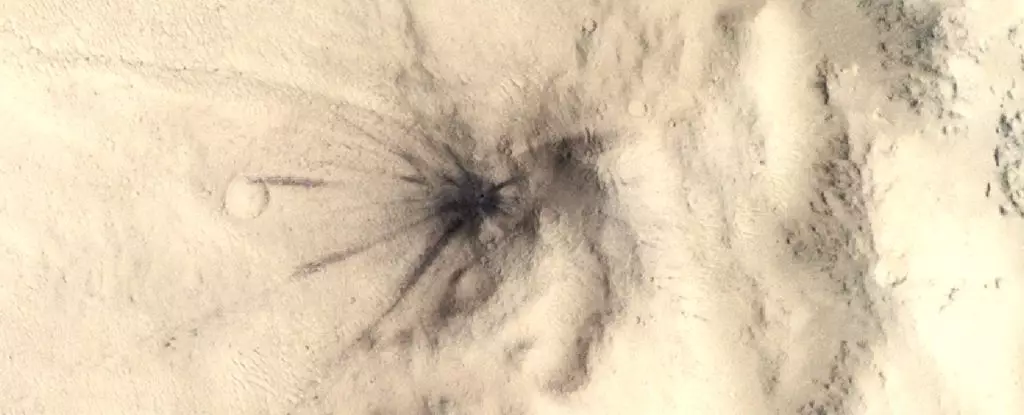Recent advancements in our understanding of Mars’ seismic activity have led to groundbreaking revelations about the red planet’s geological dynamics. A new study leveraging artificial intelligence (AI) to analyze seismic data from the Mars InSight mission has prompted a reevaluation of prior assumptions regarding how and why marsquakes occur. This research has not only highlighted the significance of meteoroid impacts as a primary cause of marsquakes but has also called into question our understanding of Mars’ interior structure, including its core dynamics.
Traditionally, scientists believed that marsquakes were predominantly triggered by tectonic activity or magmatic movements within Mars. However, the analysis conducted by planetary scientists, including Valentin Bickel from the University of Bern, reveals that a substantial number of these seismic events can instead be attributed to meteoroid impacts. Bickel notes, “Our observations show that some of the recorded marsquakes are actually caused by meteoroid impacts and not tectonic activity.” This revelation has profound implications, suggesting a need for a paradigm shift in how we interpret seismic data from Mars. It compels us to acknowledge that the Martian surface is more active than previously assumed, with an impact rate that is significantly higher—estimates range from 1.6 to 2.5 times the previous figures.
Between 2018 and 2022, NASA’s InSight lander operated as a seismometer on the Martian surface, detecting over 1,300 quakes during its mission. This unprecedented amount of data provided a unique insight into Martian seismic activity. In a pioneering approach, Bickel and his team employed a machine learning algorithm to analyze images from the Mars Reconnaissance Orbiter’s HiRISE instrument, identifying 123 new impact craters that emerged during InSight’s operational period. By cross-referencing these craters with the seismic occurrences documented by InSight, they discovered that at least 49 of these tremors correlated with impact events. This procedural melding of advanced technology and planetary science exemplifies the innovative steps researchers are taking to redefine planetary geology.
Digging deeper into the nature of these impacts, Bickel’s research not only identified more frequent meteoroid assaults on Mars but also suggested a need to reexamine geological formations like Cerberus Fossae. The team pinpointed a 21.5-meter impact crater linked to a notable marsquake, indicating that some seismic activity attributed to this region is the result of external impacts rather than solely internal geological processes. Constantinos Charalambous from Imperial College London states, “We thought Cerberus Fossae produced lots of high-frequency seismic signals associated with internally generated quakes, but this suggests some of the activity does not originate there and could actually be from impacts instead.” This acknowledgment leads to the conclusion that Mars’ geological narrative is complex and multifaceted, shaped by both its intrinsic dynamics and the extraterrestrial forces acting upon it.
Perhaps the most captivating finding from this research is how impact-generated seismic waves interact with Mars’ geological layers. The researchers found that these seismic waves are not merely localized to the crust; instead, they can penetrate into the mantle and even deeper regions of Mars, utilizing a pathway described as a ‘seismic highway.’ This new understanding alters the perception of the Martian interior. Previously held notions that the seismic activity was confined to the upper layers should now be reevaluated. The misinterpretation of how seismic waves travel through various layers suggests our previous characterizations of Martian geology might need significant correction, as Charalambous emphasizes, “These findings challenge previous assumptions about the propagation of seismic waves.”
The revelations brought about by this study underscore the power of merging Earth-based scientific methods with advanced AI technology in planetary exploration. By recognizing marsquakes as a complex interplay of both internal geological processes and external impacts, we are only beginning to grasp Mars’ true dynamism. These findings herald a new era in our exploration and understanding of the red planet, transforming our interpretations of its geological history and leading to more comprehensive inquiries into its core, surface dynamics, and the possibility of life. As we continue to unveil the mysteries of Mars, it becomes increasingly clear that our quest for knowledge must remain adaptable, reflecting the complexities of the universe we inhabit.

